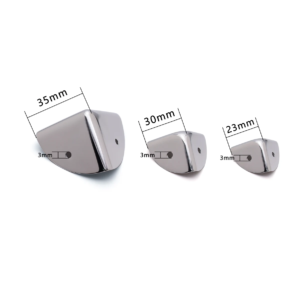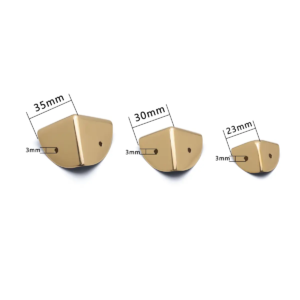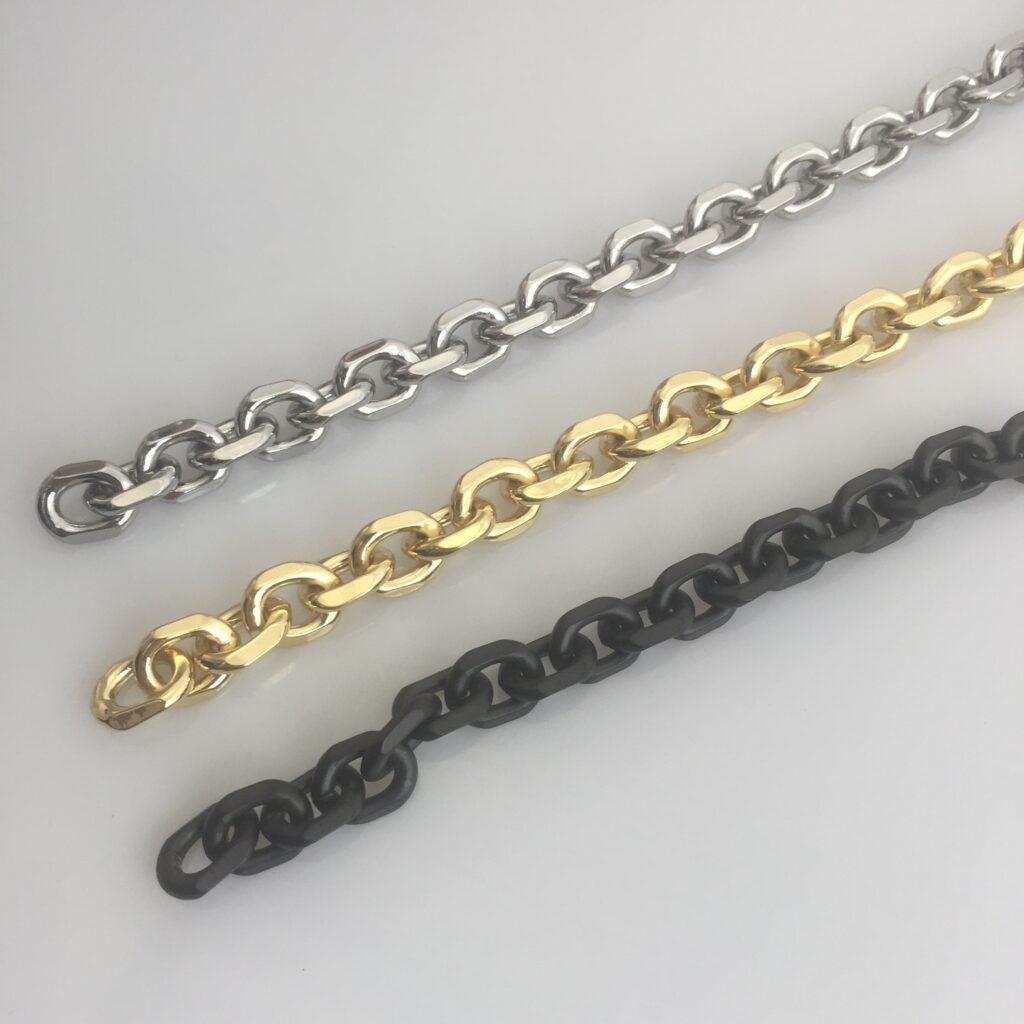In the luggage and bag manufacturing industry, hardware accessories are critical components that underpin both functionality and aesthetics. The efficiency and stability of their supply chain directly determine the product’s market competitiveness. From raw material procurement to final delivery, the supply chain for hardware accessories involves multiple stages and stakeholders, requiring precise control of quality and cost while navigating market fluctuations and technological evolution. This article analyzes the supply chain from three dimensions: its characteristics, challenges, and strategic responses.

I. Characteristics of the Hardware Accessories Supply Chain
1. Diverse Product Demand and Complex Supply Chain Structure Hardware accessories for luggage and bags are highly varied, including components such as handles, locks, zippers, and decorative hardware. Materials range from iron, copper, aluminum to zinc alloys, and each product requires distinct production and finishing processes (e.g., eco-friendly plating, vintage finishes). This diversity necessitates collaboration with diverse suppliers: • Raw material suppliers: Provide metals or semi-finished goods (e.g., aluminum ingots, copper sheets). • Mold manufacturers: Develop casting molds that directly impact product precision. • Plating processors: Must meet environmental standards (e.g., RoHS compliance), especially for exports subject to strict heavy metal regulations. • Assembly and quality inspection: Requires coordination with bag manufacturers to ensure final product compliance. Additionally, demand for hardware accessories is highly influenced by fashion trends, seasonal changes, and brand design preferences, demanding a supply chain capable of rapid responsiveness.
2. Geographic Concentration and Cluster Dependency China is the global hub for hardware accessory production, with key clusters in Guangdong (Shilǐng, Foshan), Hebei (Baigou), and Zhejiang (Yiwu). These clusters exhibit the following features: • Efficient upstream-downstream collaboration: For example, Shilǐng’s hardware market and nearby bag manufacturers form a “front-store, back-factory” model, shortening delivery cycles. • Cost advantages: Bulk purchasing and economies of scale reduce raw material and logistics expenses. • Information sharing: Enterprises within clusters leverage trade fairs and industry associations to exchange market trends and technical insights. However, overreliance on specific regions poses risks, such as supply chain disruptions from regional policy changes or natural disasters.
3. Stringent Quality and Environmental Standards Critical quality metrics for hardware accessories include durability, corrosion resistance, and consistency in appearance. For instance, load-bearing tests for handles, anti-pick performance for locks, and adhesion tests for plating layers must meet rigorous specifications. Export products must also comply with international environmental regulations (e.g., EU REACH), which impose strict controls on chemical usage during production. A full-chain quality traceability system must be implemented across all stages, from raw material testing to final product shipping.
4. Accelerating Digital Transformation The adoption of ERP (Enterprise Resource Planning), MES (Manufacturing Execution Systems), and IoT technologies is driving supply chain management toward intelligence. Examples include: • Inventory management: Real-time data monitoring minimizes stockpiling and shortages. • Logistics optimization: Big data analytics predicts demand patterns to select optimal shipping routes and reduce costs. • Supplier collaboration: Cloud platforms enable real-time sharing of orders, production progress, and quality data, improving coordination efficiency.
II. Challenges in the Hardware Accessories Supply Chain
1. Supplier Management Complexity • Quality inconsistency: Some small and medium-sized suppliers lack standardized production processes, causing fluctuations in product yield rates. • Pricing imbalance: Large brands often dominate pricing, squeezing suppliers’ profit margins and risking long-term cooperation. • Technological upgrading pressure: Innovations like lightweight alloys or 3D-printed molds require continuous R&D investment, which smaller firms may struggle to afford.
2. Mismatch Between Inventory and Demand Forecasting Market demand for hardware accessories is highly volatile, influenced by seasonality (e.g., travel peaks) and trends (e.g., retro vs. minimalist designs). Forecasting errors can lead to: • Excess inventory: Overproduction ties up capital, such as obsolete decorative hardware due to outdated designs. • Stockouts: Popular products may face delays in restocking, damaging brand reputation.

3. Logistics and Delivery Efficiency Bottlenecks • High cross-border logistics costs: Exporters face rising international shipping fees and port congestion. • Customization demands: Small-batch, high-frequency orders challenge traditional mass logistics models. • Last-mile challenges: While consumers demand faster delivery, rural or remote areas often lack adequate coverage.
4. Environmental and Compliance Pressures Stricter environmental regulations increase supply chain costs. For example: • Plating process upgrades: Transitioning to cyanide-free plating or alternative methods requires investments of up to tens of thousands of yuan per production line. • Waste management: Recycling metal scraps and compliant waste disposal incur additional expenses, prompting some firms to violate regulations due to cost pressures.
5. Shortage of Technical Talent Highly skilled workers in areas like mold design and precision casting are in short supply. Younger workers often prefer emerging industries like IT, leading to a skills gap in traditional manufacturing roles.
III. Strategies and Future Directions
1. Enhancing Supply Chain Collaboration and Digitization • Build a collaborative platform to integrate data from suppliers, manufacturers, and logistics providers for real-time visibility of orders, inventory, and production schedules. • Adopt industrial internet technologies, such as AI-driven demand forecasting, to dynamically adjust production plans.
2. Optimizing the Supplier Ecosystem • Establish a tiered supplier evaluation system based on technical, quality, and environmental performance. • Promote joint ventures among small suppliers to share resources and reduce individual costs for technological upgrades.
3. Flexible Production and Inventory Management • Implement Just-In-Time (JIT) production to minimize raw material and finished goods inventory. • Adopt modular design to enable hardware compatibility across multiple bag styles, lowering customization costs.
4. Green Supply Chain Development • Prioritize eco-compliant suppliers and drive decarbonization across the entire supply chain. • Establish waste recycling partnerships, such as collaborating with metal recyclers to repurpose scrap materials.
5. Workforce Development and Technological Upgrades • Partner with vocational schools to train technicians in mold design and precision machining. • Introduce automation (e.g., intelligent casting machines) to reduce reliance on manual expertise. Conclusion The efficient operation of the hardware accessories supply chain is central to a company’s competitive edge, yet its complexity and challenges are significant. By embracing digital transformation, green practices, and collaborative optimization, enterprises can overcome geographical, cost, and technical barriers. Shifting the supply chain from a “cost center” to a “value-creation engine” will be key to thriving in the dynamic luggage and bag industry.


